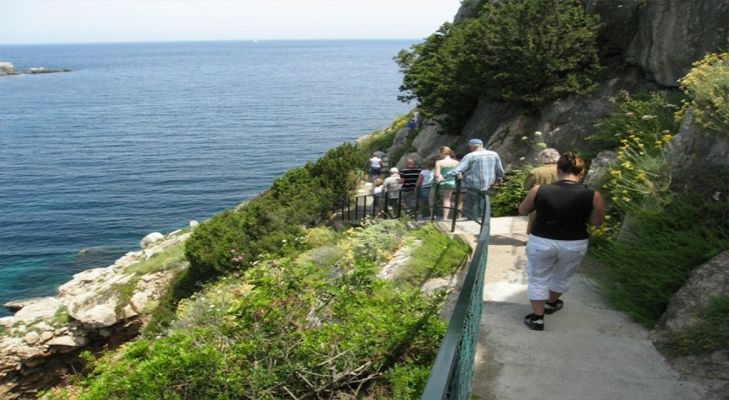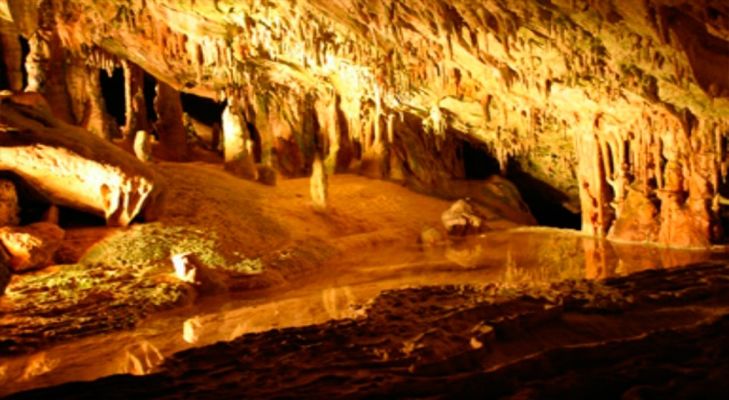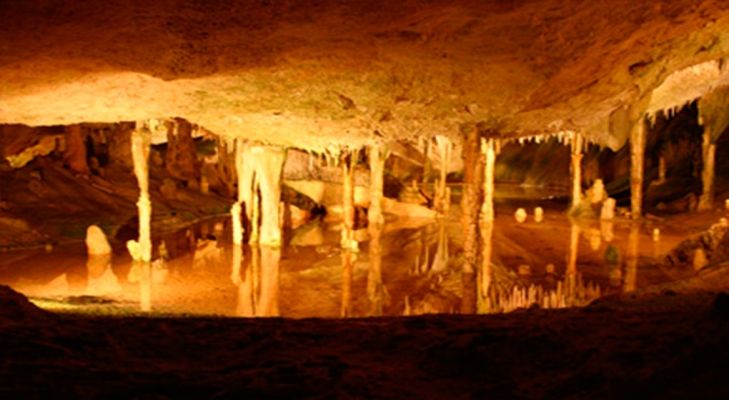Cova de Can Marça
The Cova de Can Marçà is located in the north of the island, in Port de San Miquel, 20 km from Eivissa, 25 km from San Antoni and 23 km from Santa Eularia.
The Cave is situated in a natural environment with incomparable views of the bay, with the islands of Murada and Ferradura in front of it.
Brief introduction to the history of the cave:
In the 1970s the Belgian speleologist Jean Pierre Van Der Abeelle arrived in the village of San Miguel and became interested in the Cave of Can Marçà. The inhabitants of San Miguel helped him to locate the entrance and exit of the cave in the cliffs of the port.
Shortly afterwards, work began to make the cave accessible and to allow visitors to visit it.
After a path dug into the rock, the entrance to the cave is reached at a height of 12/14 metres above sea level, from where the visit begins. The cave is more than 100,000 years old and was formed by telluric faults. It has been through glaciations and tropical heat, and is now almost fossilised, except in the deepest galleries, where the dripping continues to form beautiful stalactites and stalagmites.
The cavity known as Can Marçà was discovered and used by smugglers, who hid packages of goods in it by hoisting them from the sea from an opening located at an altitude of 8/10 metres.
Today, you can clearly distinguish the red or black painted signs that marked the way to another exit in case of an escape or emergency.
The geological forms show the richness of the underground watercourses that flowed through the area, fossilising the waterfalls and watercourses.
The materials that can be seen inside the cave are basically calcium carbonate, iron oxide, magnesium, clay, etc.
The contributions of the geologists and speleologists who have been involved in the development of the cave have consisted of reproducing what existed in ancient times, recovering the waterfalls and watercourses that existed in those times.
Bones and fossils of rodent animals of extinct species have been found, whose skeletons were transferred to the Natural History Museum for their corresponding cataloguing and to enrich the prehistoric fauna of our old Mediterranean lands.
From the first viewpoint you can see the whole bay of Port de San Miquel, also called Port Balanzat, with the island of Murada in the background, where there is a unique species of lizard muradesnis with intense colours and prehistoric shapes.
-
Cueva de Can Marsa, Port de Balansat, 07815 Puerto de San Miguel - Ibiza
-
0034 971 33 47 76
-
This email address is being protected from spambots. You need JavaScript enabled to view it. -
https://www.covadecanmarsa.com/









